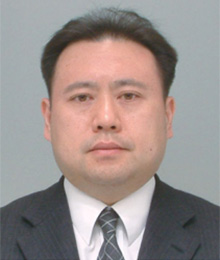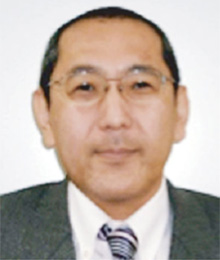
Takehiro NAKAMURA

Yukihiko OKUMURA

Tetsuro IMAI



The recipients started their endeavor to achieve the practical realization of fifth generation mobile communications systems (5G) as early as in 2010, when the current fourth generation mobile communications systems were still at their initial introduction phase. The recipients were among the first to recognize the need to establish a next generation communication system to address the mobile traffic which was expected to keep growing into the future. They lost no time in initiating a study of new technologies and systems toward the practical realization of 5G, which supports usage scenarios, enhanced mobile broadband (eMBB), massive machine-type communications (mMTC), and ultra-reliable low-latency communications (URLLC). For the following 9 years, they conducted a wide array of activities ranging from research and development to application of services, spearheading efforts to achieve the practical realization of 5G.
For the practical realization of 5G, it was essential to develop a system able to use higher frequency bands than those used in existing systems as such lower bands are becoming scarce frequency resources. In addition, it was necessary to ensure that the new system will have significantly higher economic efficiency and reliability as well as significantly improved performance. In consideration of such requirements, they decided to make use of high SHF bands (to newly use the high SHF bands from 6 GHz to 30 GHz in addition to the UHF bands and low SHF bands used by existing systems). Aiming to realize a system which could introduce new frequency bands in combination with existing bands, they proposed a new radio access system architecture that enables the efficient and low-cost deployment of high SHF bands to areas in need of such bands. In addition, they developed new systems and technologies for radio wave propagation, advanced radio transmission and the systematization of high SHF bands through the prototype development of real equipment and experimental trials. Among others, a high-SHF-band MIMO system composed of massive-element antennas and the beam forming technology that they established have enabled them to successfully conduct the worldfs first ultra-high-speed radio data transmission achieving 27 Gbps in outdoor mobility environments by means of 28 GHz-band ultra-wideband transmission and 16-beam spatial multiplexing. Furthermore, they succeeded in the worldfs first 28 GHz-band ultra-high-speed radio communication exceeding 1 Gbps in field trials simulating high-speed trains running at around 300 km/h such as the Shinkansen and beam handovers between base stations on the 28 GHz-band.
The recipients also addressed the mobile radio propagation characteristics of high SHF bands, which had remained unclear. They conducted a comprehensive range of activities starting from the fundamental modeling of a new radio propagation theory to the establishment of a technology for a more practical estimation method. These efforts led them to develop the worldfs first real-time radio wave visualizer that can show the state of multiple radio waves arriving from different directions over 360 degrees. This visualizer is able to analyze the radio propagation characteristics on high SHF bands in a dynamic mobility environment and facilitate the efficient deployment of base stations.
The recipients also participated in the 5G Field Trials organized under the initiative of the Ministry of Internal Affairs and Communications (MIC) as a leading organization in performing actual field trial experiments toward the resolution of social issues and regional revitalization by applying 5G. During the Field Trial, they conducted experiments for a variety of use cases leveraging 5G in cooperation with partners nationwide such as local governments, enterprises and universities. Furthermore, they performed system trials together with partners from various industries aimed at new market development, leading the activities for 5G system validation and the creation of new services applying 5G.
The above advanced efforts led to the allocation of the 28GHz-band in the high SHF bands to mobile operators in Japan in April 2019 for their domestic 5G commercial systems together with two new frequency bands in the low SHF band, enabling the launch of pre-commercial 5G services in Japan using commercial base stations and mobile terminals in September 2019 followed by commercial services in March 2020. When 5G is put into full-scale practical use, it will surely bring new value to society through mobile communications systems. The recipients have made significant pioneering contributions by establishing new 5G technologies and systems that are fundamental building blocks for achieving the practical realization of 5G. Their outstanding accomplishments are worthy of the Achievement Award.



